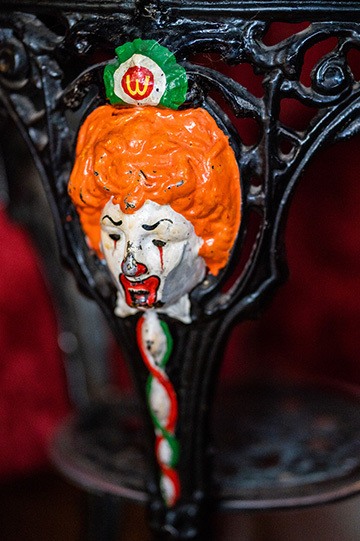
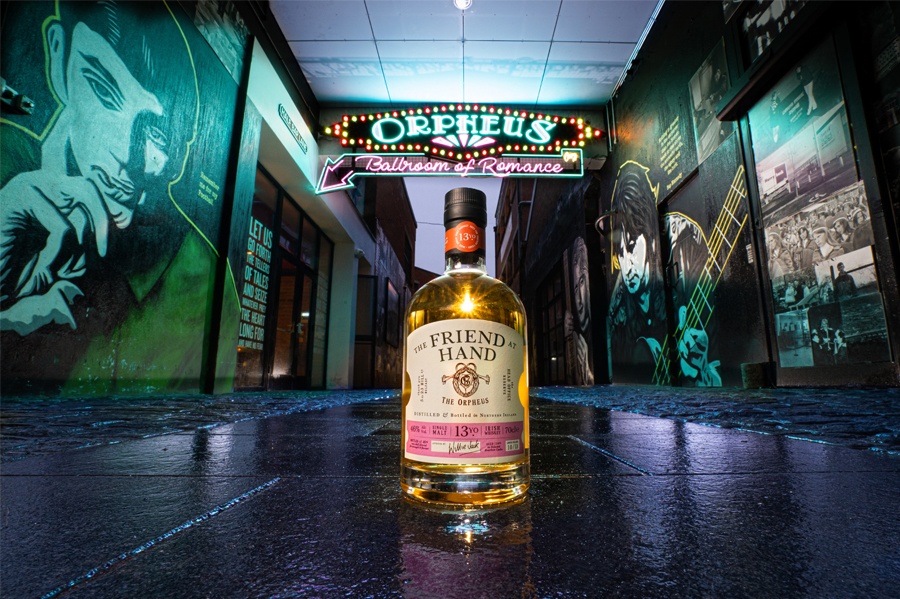
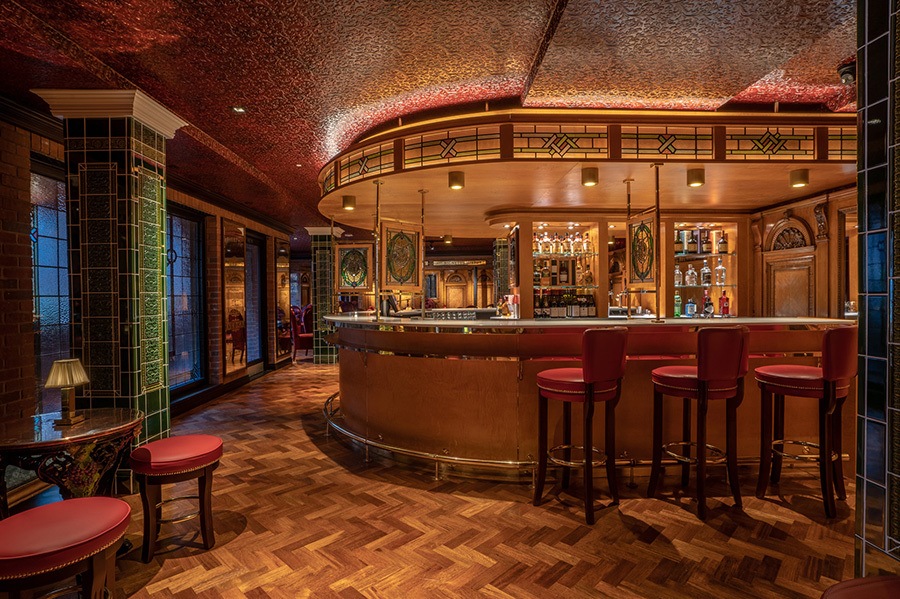
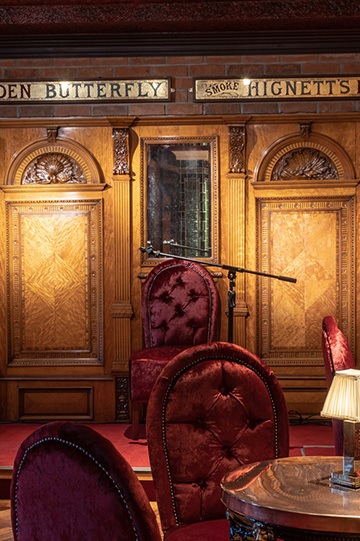
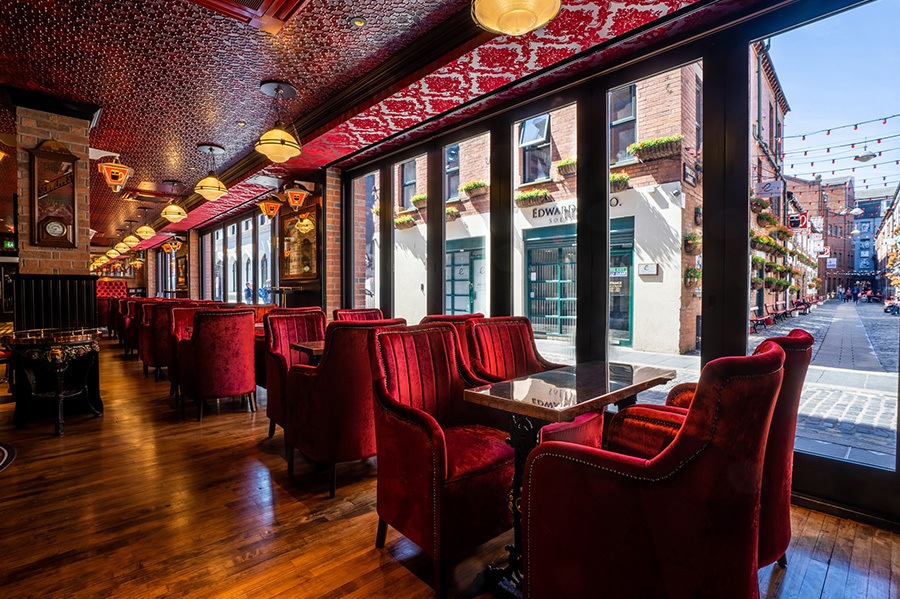

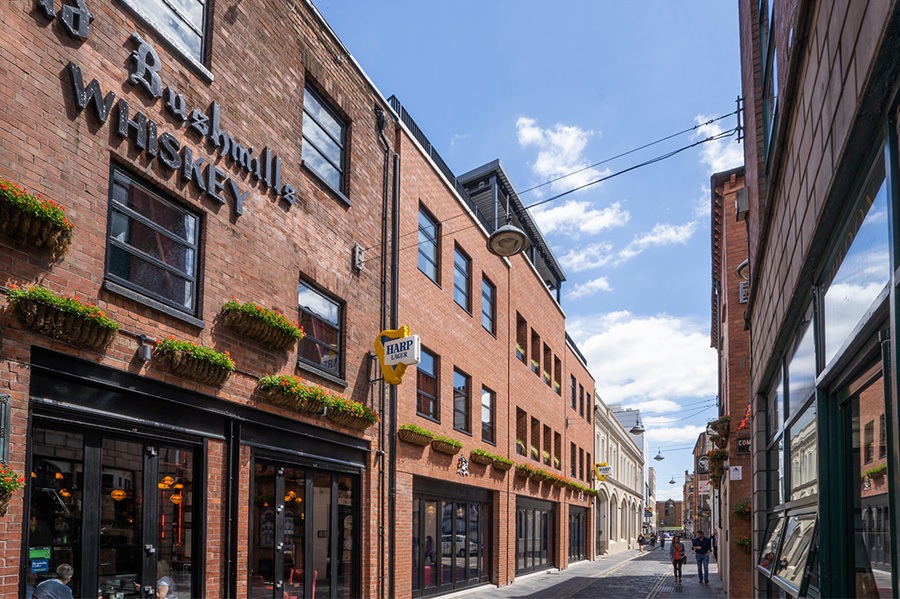
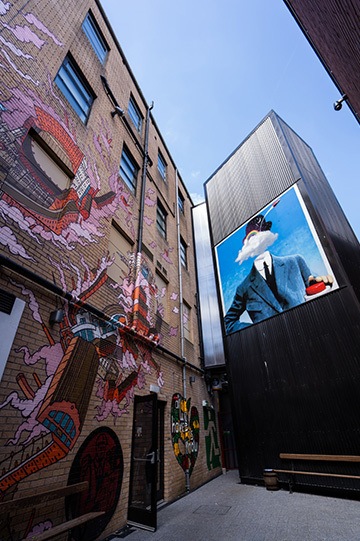
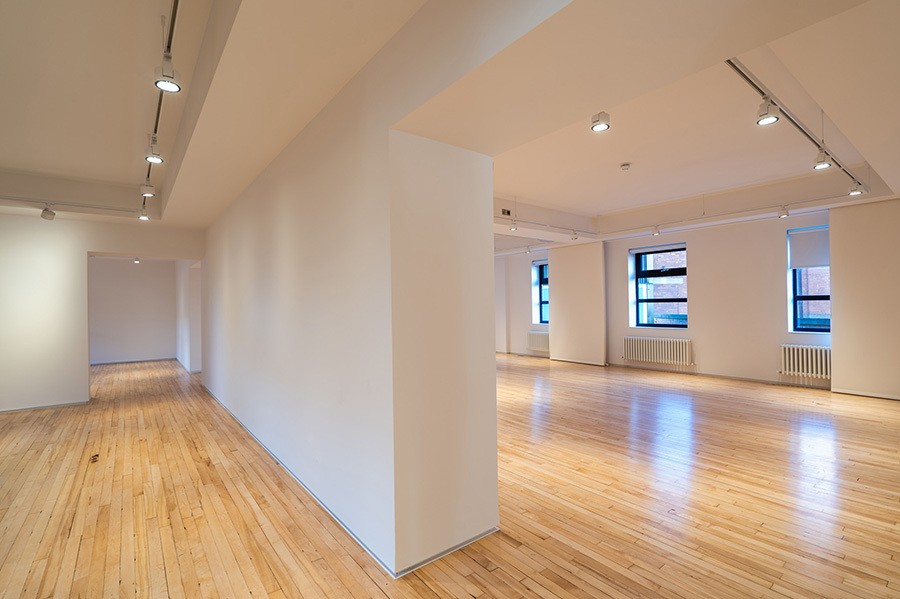
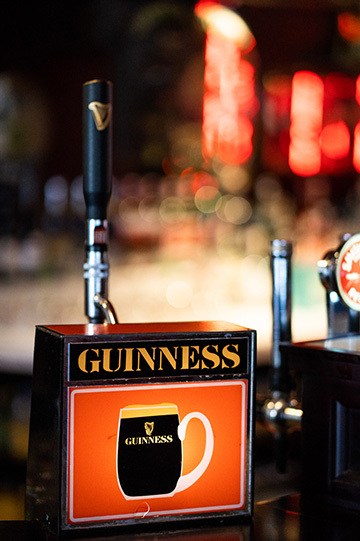
The Orpheus: Ballroom of Romance has been a vision of Willie and Joanne Jack, alongside their late business partner and friend, Bruce Kirk. An extension to the Harp Bar on Hill Street Belfast, The New Orpheus is a stunning monument to one of Belfast’s lost architectural treasures, the Orpheus Ballroom, York Street (1932).
The second floor unfurls as an art gallery, purposefully designed to bolster local talent and creativity within the city. The restored ballroom floor resurfaces; bathed in a natural varnish that brings it back to life.
In 2016 the Orpheus was demolished. Prior to its demise, Willie and Joanne Jack urged to preserve poignant features in a bid to maintain the monument’s spirit. Distinctive décor and ornamentation were carefully selected and saved, eventually to be erected at a new site adjoining The Harp Bar on Hill Street.
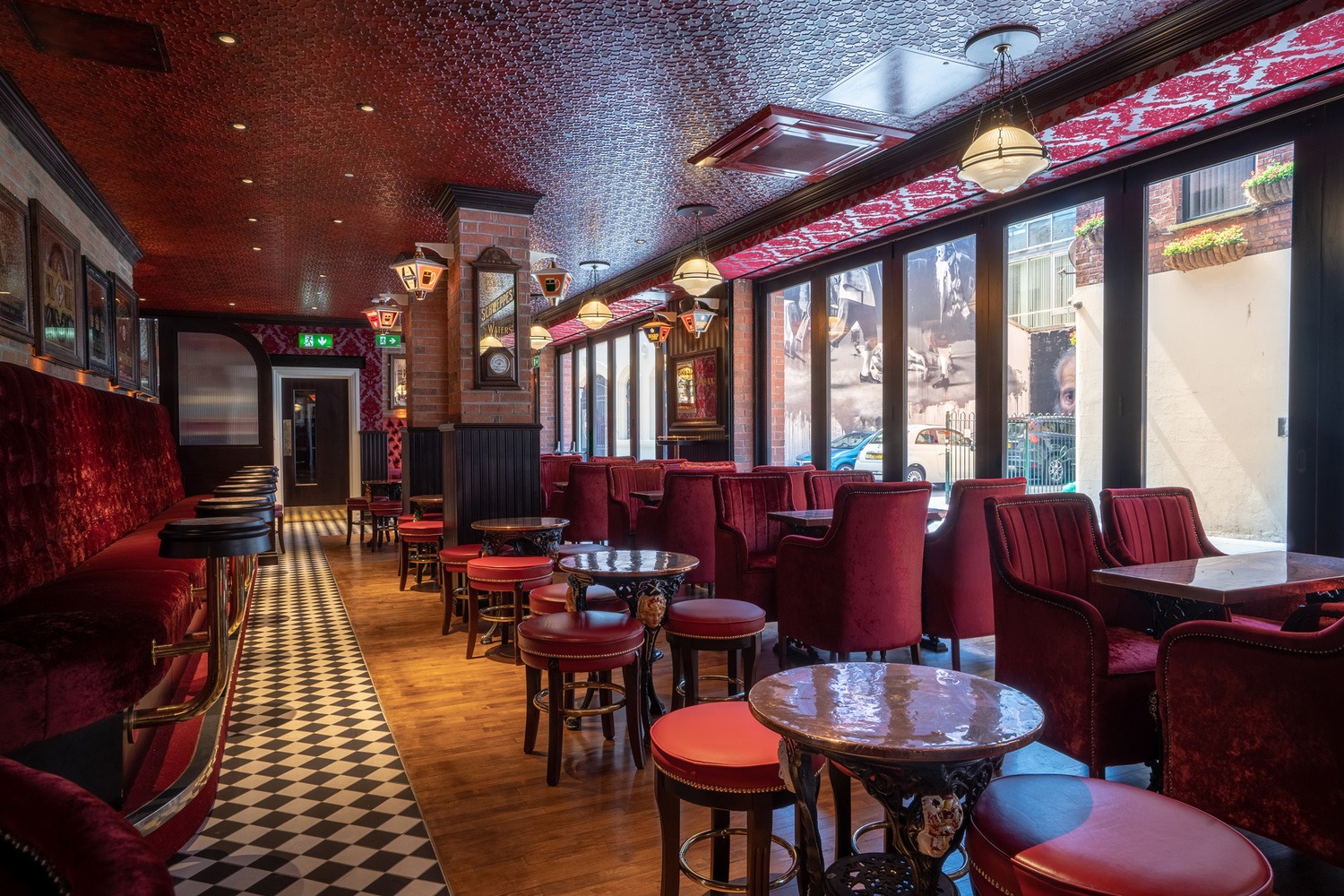
Now, the Orpheus begins its story next to the Harp Bar. The ballroom floor, salvaged and reverently restored to its former glory, introduces the modern venue that is lavished with antiquities of days-gone-by. The Canadian Maple dancefloor inhabits the new premise with well-polished character and, in a city better known for borders than ballrooms, is a spectacular showpiece to stand on.
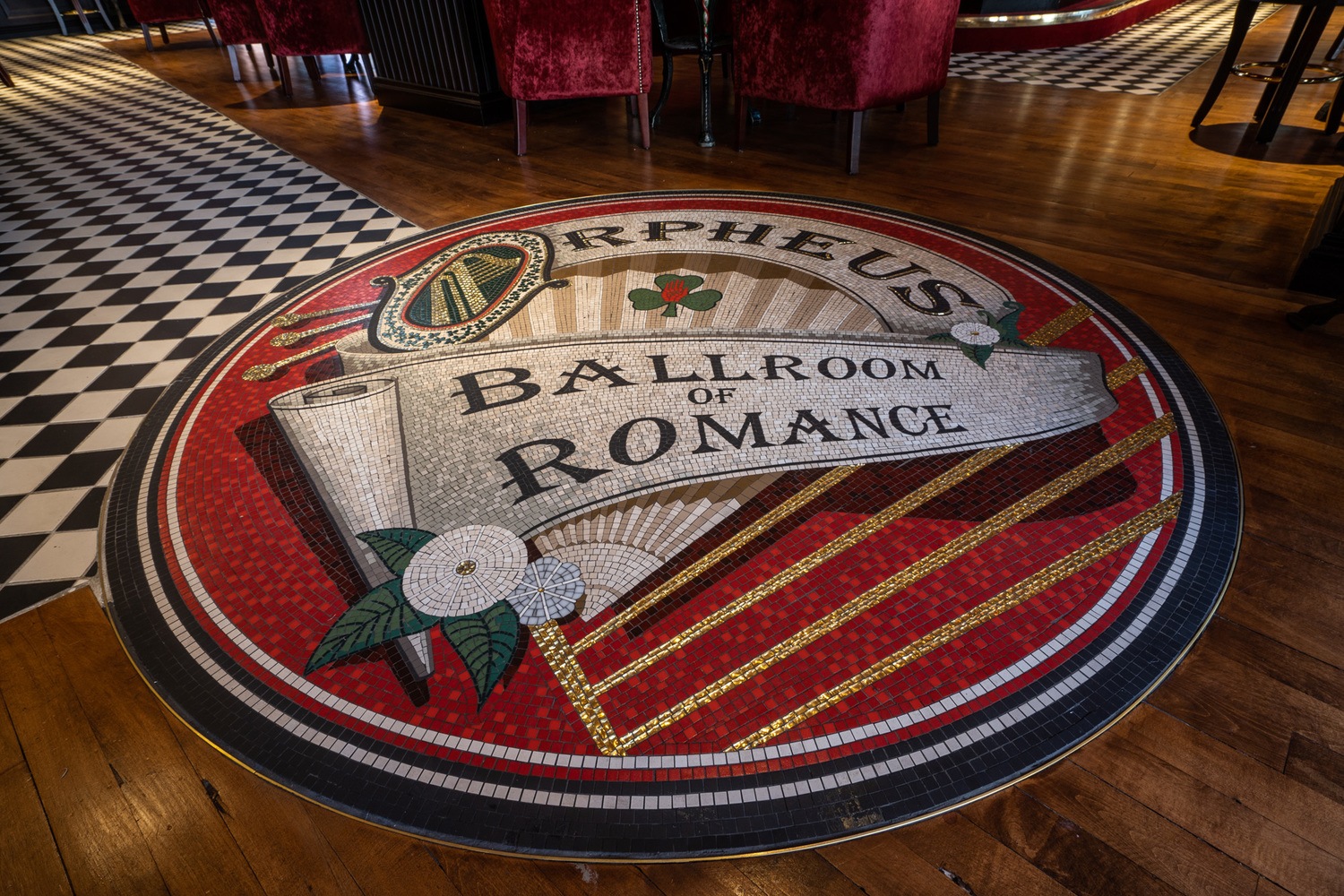
Nestled within the floor is a mosaic masterpiece, characterising the exuberance of the Ballroom of Romance. Tiled depictions of musical instruments and floral motifs identify the Orpheus’ prestige, epitomising Belfast’s entertainment culture; creating community through music and dance.
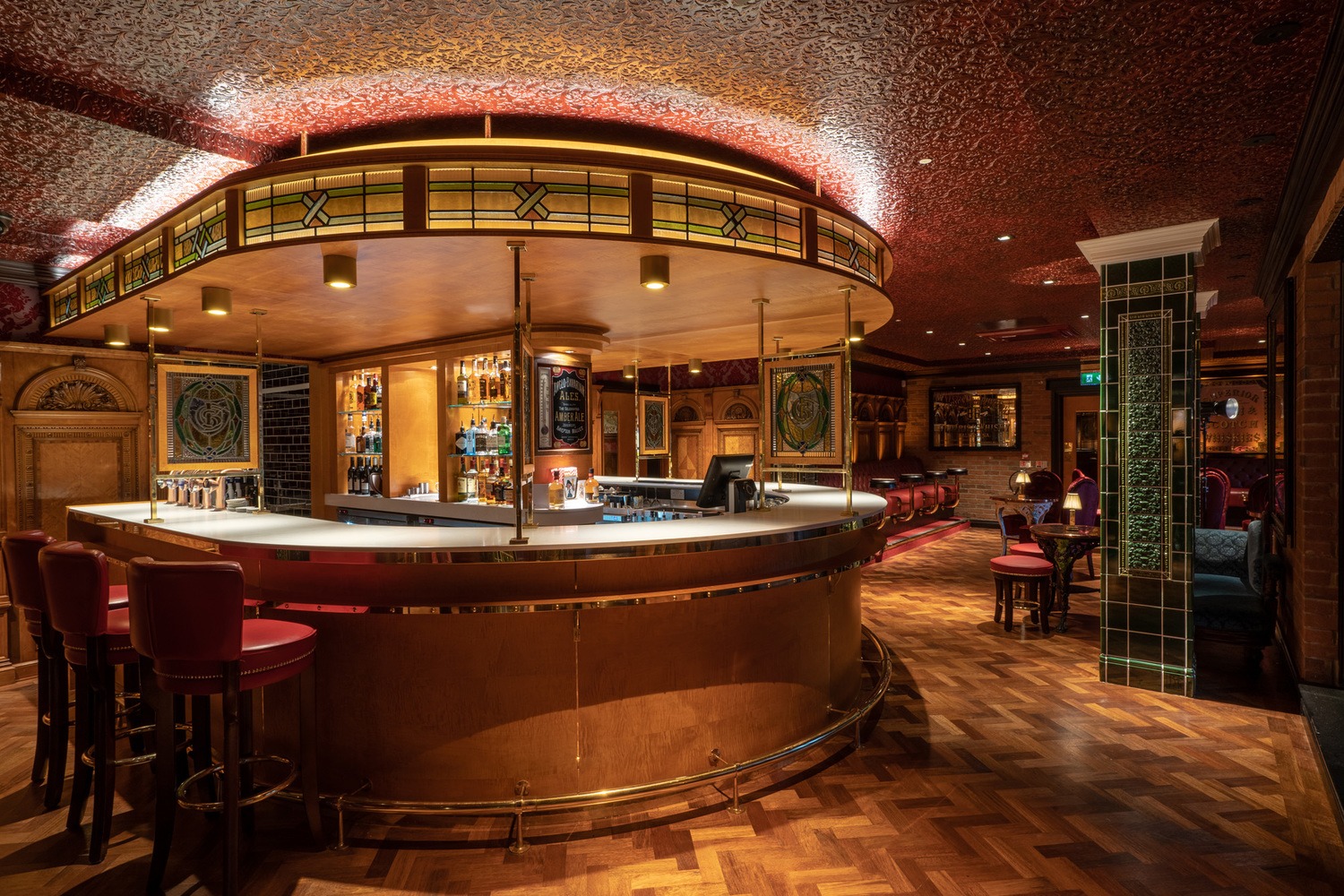
The first floor extends from the Swinging’ Diddy lounge, adjoined by a patterned parquet floor. Central in the space is the unique Horseshoe bar, decorated with numbers of colourful stained-glass panels that proudly present the Co-op’s crest. Plush furnishings embellish the room, soft maroon velvets and fringed curtains demonstrate the stylised romance of a Victorian Belfast.
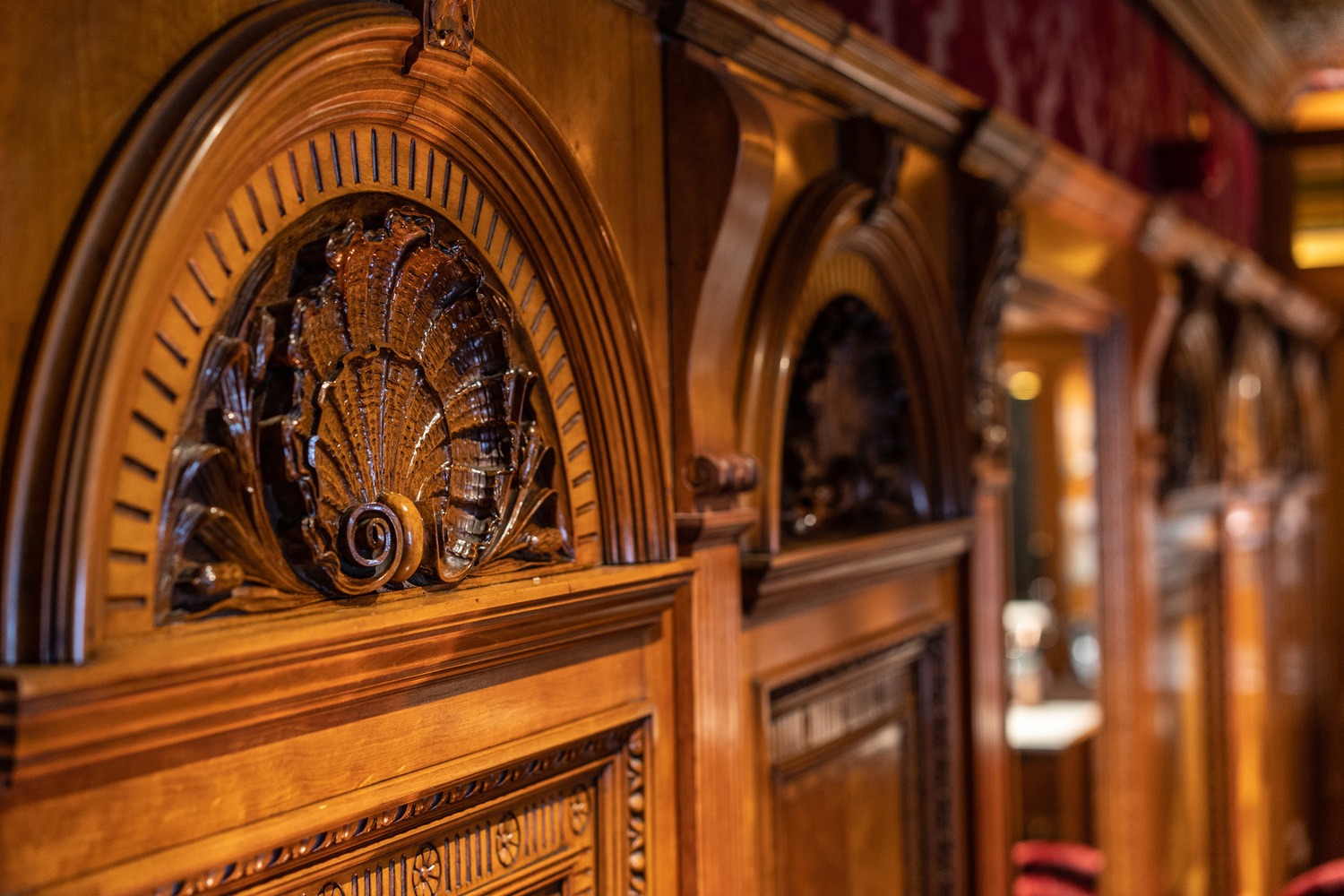
Subtle suggestions of Sailortown’s heritage are apparent throughout. The walls are adorned with maritime detail, clad in hand-carved, satinwood panels, that once belonged to the RMS Walmer Castle; built by Harland and Wolff at the Belfast shipyards in 1901. Now, over a century later, the authenticity and craftsmanship of such furnishings remain unscathed as they bask in the ambience of the Art Deco temple, emboldened by hues of gold and green.
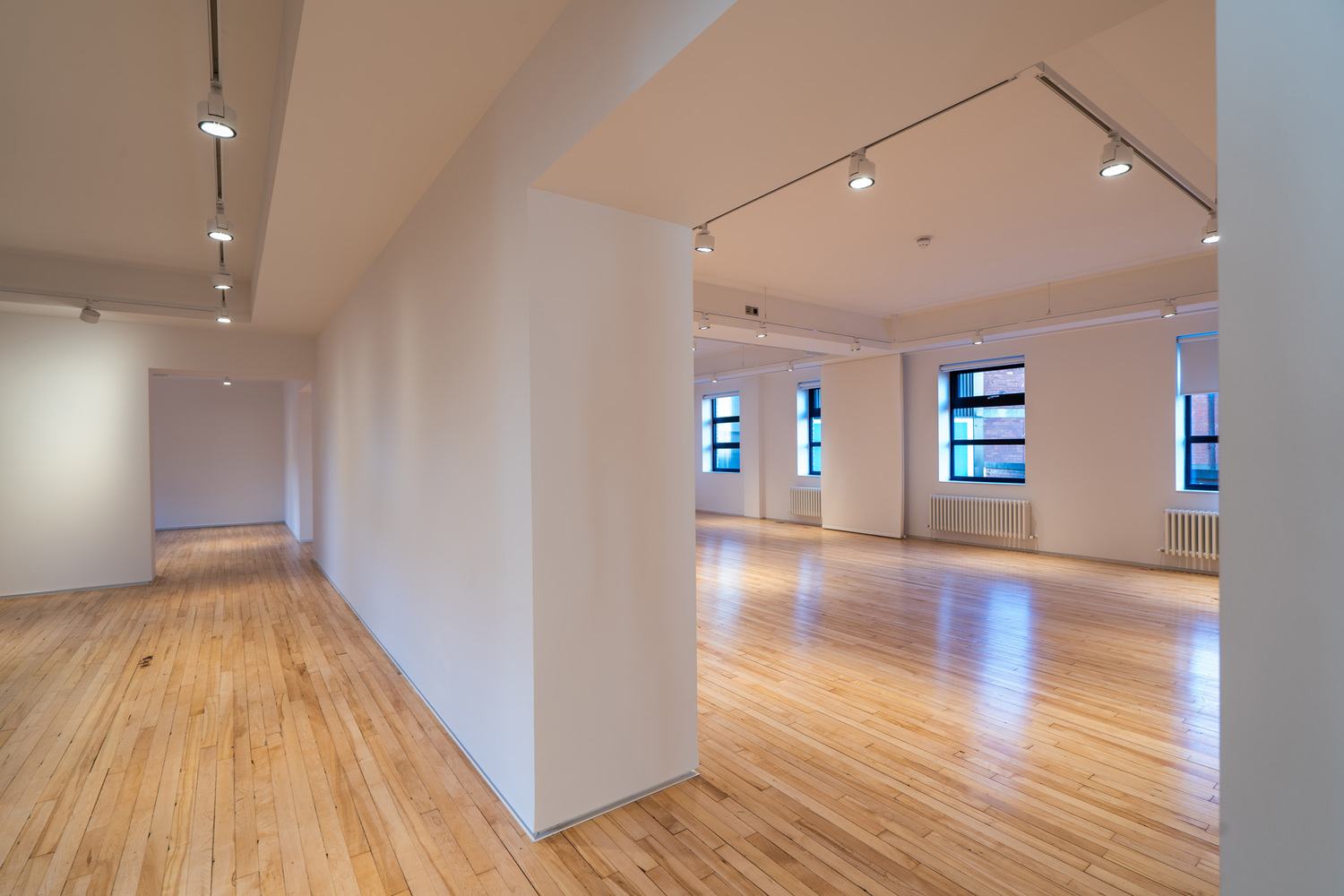
A stillness pervades through the room, distinguishable from the squeaks and creaks of footsteps across the sprung floor. Here, then, lies a space created for inspiration and reflection; inspired by a building that meant so much to so many.
Give us your email address and we’ll make sure your plans for the week are sorted, every week. No rubbish advertising and no giving your details out to every Tom, Dick or Harry. Promise.
Give us your email address and we’ll make sure your plans for the week are sorted, every week. No rubbish advertising and no giving your details out to every Tom, Dick or Harry. Promise.